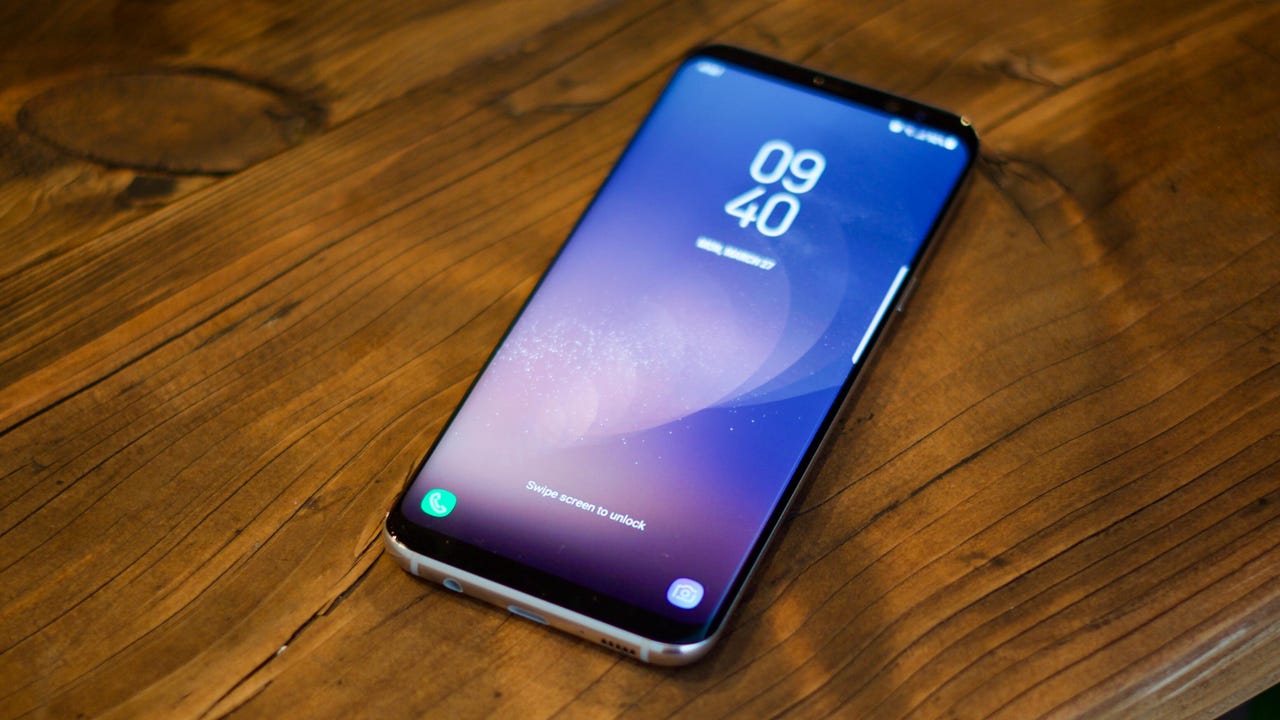6 things I would change about the Samsung Galaxy S8

Samsung's best smartphone to date is a hit. ZDNet's Matthew Miller and I both applauded the Samsung Galaxy S8, touting it as one of the best smartphones you can buy right now.
It may be close to perfect, but there are things I would love to see Samsung implement in future products.
Move the fingerprint sensor
Obviously, at the top of my list -- and I imagine everyone's list -- would be to move to oddly placed fingerprint sensor from next to the rear camera to the middle of the phone.
Doing so would eliminate errant smudges on the camera lens, and make the larger S8 Plus easier to manage with a single hand.
Stereo speakers
As with the LG G6, Samsung's Galaxy S8 has a lone speaker on the bottom right of the housing. This placement leads to muffled sound, simply by placing my pinky across the skirt of the phone when holding it.
Stereo speakers won't eliminate my covering up of the bottom speaker, but it will prevent sound from being, at times, completely cut off.
As I mentioned in my review of the Galaxy S8, Samsung wants this device to be central to all of your computing experiences -- including virtual reality. With that in mind, it makes little sense to skimp on stereo speakers.
Dual cameras
Apple wasn't the first to add dual cameras to the back of a smartphone, with LG proving it can be a useful feature dating back to the LG G5, and HTC attempting it years before that.
LG's approach is to have a standard lens and another wide-angle lens. Apple's is to use the second lens as a means for adding depth to photos with Portrait Mode on the iPhone 7 Plus.
I wish Samsung would have done the same on the Galaxy S8. If not to add a blurry depth effect to pictures, but to add a wide-angle lens, which would give users yet another option when capturing photos.
S Pen
I know, I know. The S Pen is a feature reserved for the Note line.
But here's the deal: Samsung doesn't have a modern Note smartphone in its lineup right now, and likely won't until August or September.
Then, there's the fact I have grown very fond of taking notes on the Tab S3 and its screen off memo feature. The larger display of both S8 models practically begs for a stylus.
I don't care if the S Pen doesn't have a spot for storage inside the S8 like the Note line does, just give me the ability to jot notes on its display.
Remap Bixby button
Samsung upset the internet this week when it was discovered the company removed the option to remap the dedicated Bixby button to Google Assistant (or any other app, for that matter).
As I pointed out on Twitter, Google Assistant already has a dedicated button, and it works just fine. Long-press the home button, and Google Assistant opens right up.
Bixby isn't fully available yet, with the most critical part of the platform -- Voice interaction -- delayed until later this spring.
I don't think I would change the Bixby button's behavior right now, but users should have the option to assign a hardware key with minimal functionality to something of his or her choosing. Whether it launches the camera app, open Google Maps, call Mom, or any other random feature.
Pressure sensitive display everywhere
Samsung took away the physical button, replacing it with an on-screen button that's pressure sensitive, meaning that particular portion of the screen can tell the difference between a tap and press.
For example, when the phone is locked a hard press on the home button wakes and unlocks the phone. A tap only wakes the device. If the home button is hidden because you're watching a video, hard press on it and it comes back to life. Samsung's implementation is intuitive and easy to use.
The subtle vibration feedback you receive when pressing on the display is similar to Apple's 3D Touch tech in the iPhone lineup.
However, unlike Apple, Samsung decided to limit the screen's pressure sensitive area to under just the home button. The navigation buttons on either side of it don't know if you're tapping or pressing -- and either does the rest of the screen.
I would love to see Samsung expand it to the entire display for things like app shortcuts and quick actions on links or app icons or previewing messages in messaging and mail apps.
As someone who has learned to use 3D Touch on the iPhone for everyday tasks, I've grown to appreciate, if not expect, the ability to press on a screen. And by adding it to only a portion of the screen, my brain can't make sense of where to tap or press.
Check out the Galaxy S8: Samsung's new flagship
